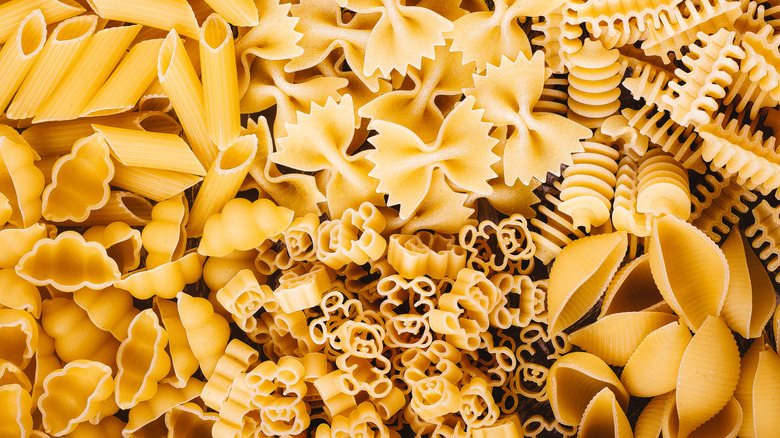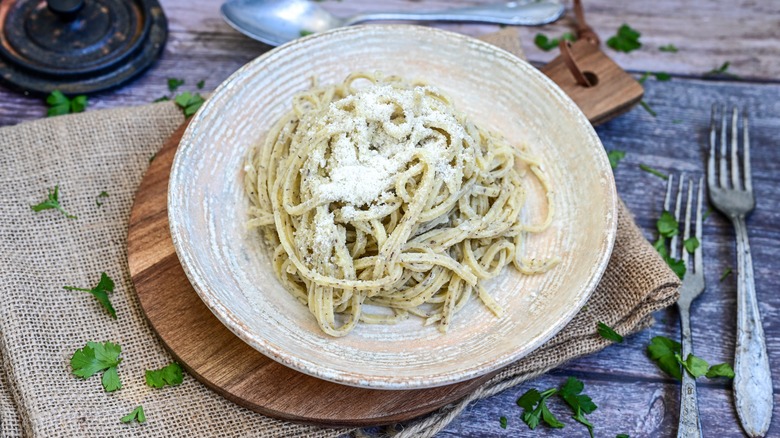The Italian Egg Pasta You Should Be Using For Butter-Based Pasta Sauces
Anyone who is a self-proclaimed pasta lover probably has a favorite pasta shape, whether it's a common classic like penne or bowtie or an obscure pasta shape like the mysterious, tennis-racket-shaped racchette. Between the way the pasta catches your sauce of choice and how the texture feels when you chew, the right shape can make all the difference in your eating experience — but with approximately 350 pasta shapes in the world, it's sometimes tempting to stick to the tried and true. If you're going to branch out, though, spaghetti's lesser-known sibling tagliolini is a great place to start.
The egg-based, ribbon-like pasta is akin not just to spaghetti, but also to italian tagliatelle. They're set apart by their cut (or 'taglia' in Italian), with tagliolini being slightly thinner. But with the same ingredients and, of course, similar names, you certainly shouldn't be ashamed if you've ever wondered what exactly the difference between tagliolini and tagliatelle is. Still, even that minor difference affects the way the sauce sits on the pasta, which is why the extra-thin cut of tagliolini is extra-perfect for delicate sauces, from sage butter to a creamy cacio e pepe, to coat the long, cylindrical surface area, resulting in a light, flavorful bite. An added benefit? It only takes two to three minutes to cook.
The sauces that will maximize your tagliolini's flavor — and why they work
Like wine pairing, there is an art and a science to matching pasta shapes to sauces. Denser pasta shapes, like rigatoni or pappardelle, are sturdy enough to hold up to heavy, meaty sauces like ragù alla Bolognese. Meanwhile, fragile shapes like tagliolini are prone to breakage under this kind of weight. But they have something else going for them — that thinness allows them to blend in easily, letting the sauce be the main star or the sauce rather than the pasta itself. Light but flavorful buttery sauces will beautifully coat your tagliolini, and any seasonings or special ingredients you feature in them with truly shine through in a way they couldn't in a heavier sauce or with denser pasta.
While it might seem that in order to make a truly restaurant-worthy meal, we have to include many ingredients, lots of seasonings, and fancy plating, the best traditional Italian pasta dishes are made better by their simplicity, which allows the fresh ingredients that are included to truly shine. One of the best examples of this is in the simple classic cacio e pepe, which calls only for salt, black pepper, pecorino Romano cheese and butter; plus a thin, cylindrical pasta ready to become a vessel for a cheesy, spicy, buttery sauce. Sage butter is another great choice, with the herb adding an earthy flavor that cuts the sweetness of the dairy, pairing especially well if you brown your butter for a nutty, warm touch — and soaking in beautifully to tagliolini.

